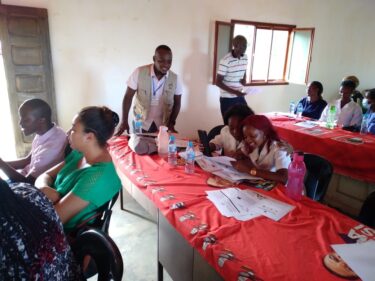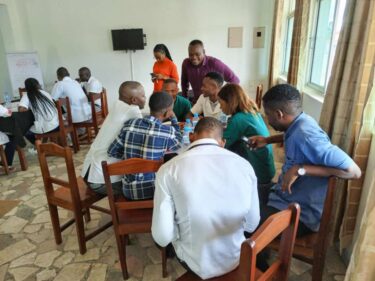How an innovative approach inspired by the quality improvement world is empowering nurses for greater impact around the globe
Nursing science researcher, Dr. Sarah Gimbel (she/her), PhD, MPH, RN, FAAN, has spent the better part of her career figuring out how to help frontline nurses take the reins of their impact in healthcare settings.
A professor and director of the UW Center for Global Health Nursing, Gimbel’s research has primarily taken place in Mozambique, where she has worked closely with nurses and doctors in HIV services. Over time, her research scope has expanded to include hypertension and diabetes.

The science of how work gets done and how systems can be improved is Gimbel’s passion. If you ask, she will be the first to say that bringing people together, in a methodical way, to understand a problem and craft informed decisions is where the magic happens.
Gimbel’s particular approach, called the Systems Analysis and Improvement Approach (or SAIA), bundles three systems engineering tools to build healthcare team systems’ thinking IQ with a uniquely implementation science spin. To the lay person, SAIA may at first sound wonkish. Until you look closer. Various flavors of systems engineering and quality improvement methods have developed and spread across countries and thrived across industries for decades – Kanban, Agile Scrum, continuous improvement, total quality, Lean Six Sigma. You name it. Gimbel simply combined proven approaches with three practical systems engineering tools—cascade analysis, process mapping and quality improvement circles—that nurses said time and again they needed to do their jobs well.
The goal of SAIA is simple. Help and other healthcare teams optimize service delivery care cascades – in other words ensure that clients receive complete, high quality care, from screening, to diagnosis, prescription, treatment, control/resolution of illness.
While most improvement strategies target a single step in a system, SAIA encourages teams to focus on the system as a whole from the patient perspective. On a monthly basis, care teams meet to jointly visualize treatment cascade drop-offs and prioritize areas for system improvements, identify modifiable facility level bottlenecks and propose, implement and assess the impact of small changes. Developing care team consensus through strengthened communication is seen as key to achieving better patient care and long-term outcomes. It puts the development of improving the health system into nurses’ hands – one clinic or care setting at a time.

“We aim to bridge the gap between knowledge and action,” Gimbel said. “Nurses know their patients and settings best. They are best equipped to make change. They don’t need to be told – they just need the right tools and support to do it.” With SAIA, workers on the frontline have a voice to improve the way work gets done – benefiting both patients and nurses.
Gimbel makes it clear that SAIA as an approach was not developed in a vacuum, but in deep collaboration with others – implementation science and engineering experts at UW and nursing and care delivery experts across the world. It is constantly evolving and growing as it is entering into its 14th and 15th funded iteration (SAIA for management of opioid use disorder for individuals exiting jail in King County, and SAIA to optimize tuberculosis management in rural South Africa).
It’s through the effort, enthusiasm and dedication of nurse leaders and frontline staff that Gimbel says has allowed for SAIA to mobilize and be sustained in under resourced clinical and community settings globally.
“Three fourths of patient care globally is handled by nurses,” Gimbel said. “Their perspective to test interventions, identify health system weaknesses, is not just important – it’s absolutely necessary.”
The goal of SAIA isn’t only to improve the quality of care provided by nurses to patients. Across the nation and the world, nurses are burning out of the field in record numbers. Washington is itself plagued by the ranking of 47th in the nation for adequate nursing staffing.
SAIA’s collaborative approach has the benefit of enhancing nurses’ overall experience in the workplace. By focusing on their needs and empowering them, it becomes absolutely possible for nurses to benefit from a healthcare system that is more responsive, efficient, and ultimately, better for both healthcare providers and patients.
Gimbel’s research methodology and the SAIA approach more generally inherently involves engaging with nurses and frontline health workers, understanding their perspectives, and working collaboratively to find solutions that work within the context of their daily challenges.
While some could describe the approach as pie-in-the-sky wishful thinking exercises, this couldn’t be further from the truth. Gimbel is a pragmatist at heart, and the outcomes of these conversations are meant to be practical, durable, and feasible, leading to sustainable improvements in healthcare services – even in resource-constrained environments. Which today is, realistically, most healthcare services.
“Nurses are at the forefront of healthcare delivery, and their expertise and insights are the missing ingredient to the broader challenges of our health system,” said Gimbel. “By empowering nurses, we have seen change happen. And with SAIA, that kind of impact scales up.”
-Alex Abplanalp